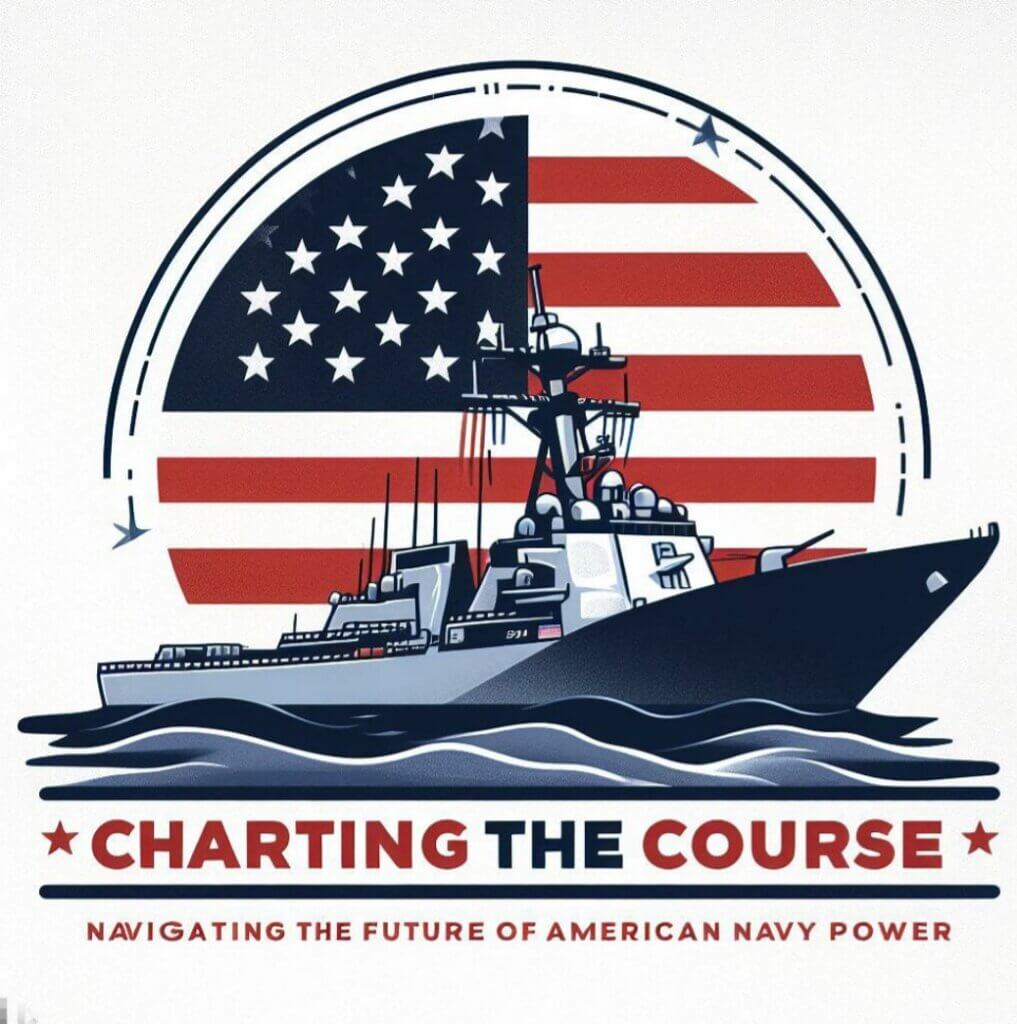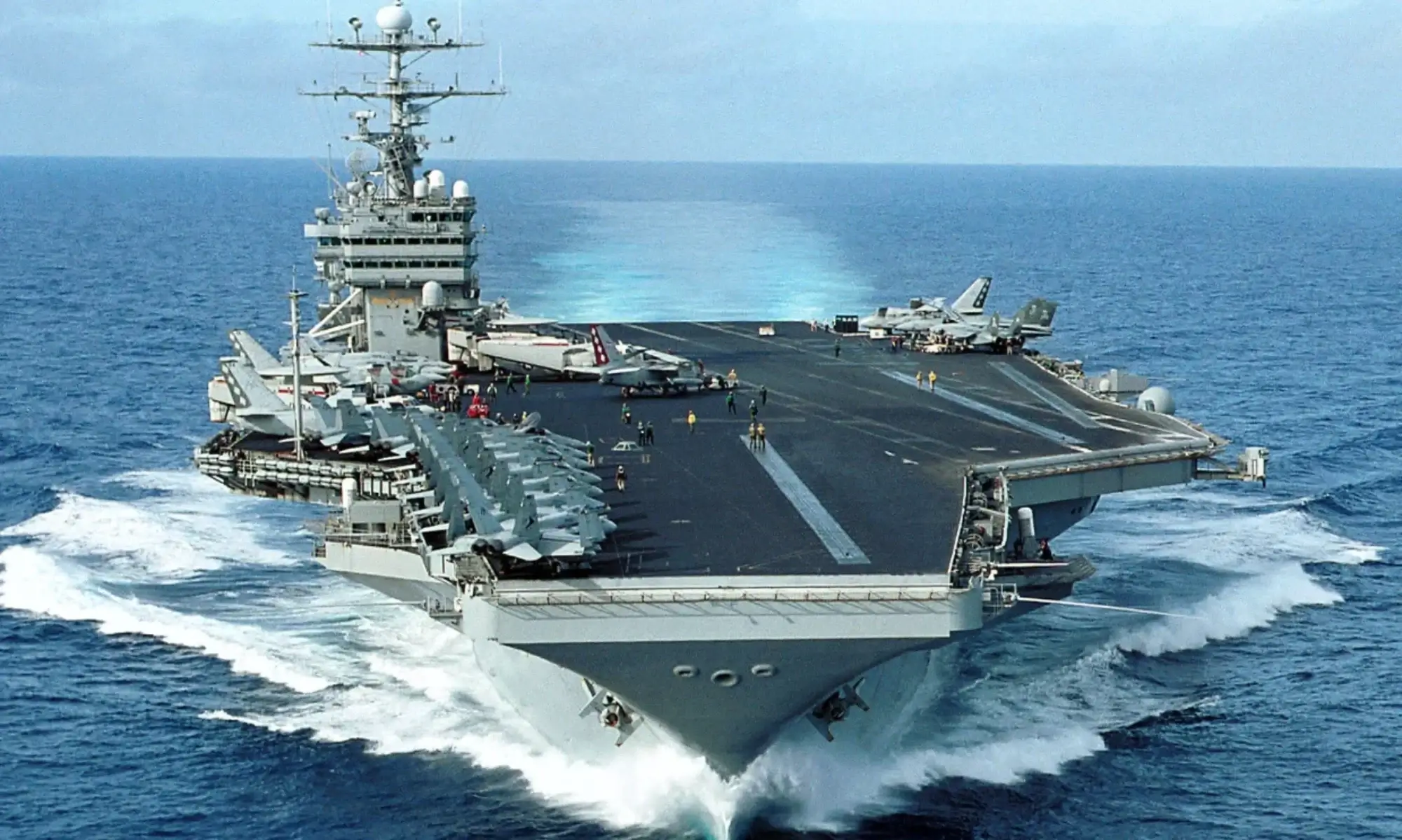
Welcome to Charting the Course: Navigating the Future of American Naval Power’ a podcast series that dives into the past, present, and future of the U.S. Navy and its impact on the world. This episode is the third of a eight in the series where we will discuss the U.S. Navy’s Fleet Size and Composition: Challenges and Opportunities for the Future.
In previous discussions we introduced the main themes, topics and the speakers that we will explore in the coming episodes.
Introduction
In a world of shifting global dynamics, the United States Navy remains a pivotal force in American defense and international maritime security. With its comprehensive array of personnel, aircraft, and ships, the Navy demonstrates remarkable capabilities and readiness to address diverse global challenges.
However, the Navy also faces the question of optimal fleet size and composition, which is more relevant than ever, particularly as it grapples with future challenges and opportunities.
In this article, we will explore the current and projected state of the U.S. Navy’s fleet size and composition, and how it relates to the national defense strategy and the global security environment.
We will also discuss the challenges and opportunities that the Navy faces in building and maintaining a larger and more capable fleet, and the potential role of unmanned systems and technology in enhancing the Navy’s force structure and posture.
We will base our analysis on the latest data and research from reliable sources, such as the RAND Corporation, a think tank that conducts research and analysis on defense and national security issues. We also seek input from other notable organizations, our members and individuals and institutions representing the American public.
The Dilemma of Fleet Expansion
Recent Congressional efforts have pushed the Navy towards expanding the size of the fleet.
For fiscal 2023, Congress added nearly 20% to the Navy’s request for shipbuilding and compelled the Navy to retain half of the 24 ships that it had hoped to retire.
While a larger fleet might seem advantageous, the reality is more complex. According to Bradley Martin and Scott Savitz, researchers at the RAND Corporation, the Navy faces the challenge of balancing the expansion with adequate funding for personnel, maintenance, and technology upgrades.
Without these, a bigger fleet could ironically lead to reduced readiness according to their report. Building more ships is a vote-winner in a number of congressional districts, but absent the personnel and support needed, additional ships could spend more time at the piers and be less capable at sea according to some.
The Navy’s budget request for fiscal 2023 was $211.7 billion, a 1.8% increase from the previous year, but still below the inflation-adjusted average of $220.6 billion since 2001.
The Navy also faces the challenge of maintaining and modernizing its existing fleet, which has an average age of 21 years, the highest since 1973.
Defining the Fleet’s Purpose
Understanding the Navy’s goals is crucial. The current fleet’s configuration is not entirely suited for low-intensity conflicts or gray-zone provocations, like those that could arise from paramilitary actions.
This gap in capabilities raises questions about the composition and size of the fleet needed for effective deterrence and response. For example, if China used its maritime militia or coast guard to coerce shipping or seize disputed islands in the South China Sea, the U.S. Navy’s overall capabilities and force structure are not designed to effectively deal with them, given a paucity of the smaller combatant ships that might be useful in such an operation.
The Navy’s fleet is largely composed of large and expensive ships, such as aircraft carriers, cruisers, destroyers, and submarines, which are optimized for high-end warfare and power projection, but may not be the best suited for lower-end scenarios.
The Navy has 299 deployable combat vessels, of which 11 are aircraft carriers, 22 are cruisers, 66 are destroyers, and 68 are submarines.
These ships are equipped with advanced weapons and sensors, such as the Aegis combat system, Tomahawk cruise missiles, and Trident ballistic missiles, which give them the ability to strike targets at long ranges and to deter or defeat potential adversaries.
However, these ships are also costly to build and maintain, and may be vulnerable to anti-access/area denial (A2/AD) threats, such as anti-ship missiles, mines, and cyberattacks, that could limit their freedom of movement and operation.
Unmanned Vessels: A Game-Changer?
The integration of unmanned vessels presents a promising yet challenging frontier. These assets could potentially offer a more balanced force structure, by providing lower-cost and more-flexible assets that can perform a range of missions, such as intelligence, surveillance, and reconnaissance (ISR), mine countermeasures, anti-submarine warfare, and surface warfare.
The absence of personnel aboard these systems does more than enable them to take greater risks; it also means that they can be designed solely around the mission, without needing to support the needs of human beings.
While most of them currently complement manned assets, some may be able to supplant them as confidence in their capabilities increases.
The Navy operates or plans to acquire various types and numbers of unmanned systems, such as the MQ-4C Triton and MQ-8 Fire Scout unmanned aerial vehicles, the MQ-25 Stingray unmanned aerial refueling tanker, the Orca extra-large unmanned undersea vehicle, the Sea Hunter medium unmanned surface vessel, and the Ghost Fleet Overlord large unmanned surface vessel.
These systems could enhance the Navy’s situational awareness, endurance, reach, and lethality, while reducing the risk to human lives and the strain on the budget.
However, despite the Navy’s enthusiasm for unmanned assets across multiple domains, congressional committees have often expressed reservations about their effectiveness and capabilities.
The integration challenges are significant, and the manpower demands have not actually gone down, but have instead remained steady or increased. The Navy also faces legal, ethical, and operational issues, such as the rules of engagement, the command and control, and the interoperability of unmanned systems.
Strategic Alignment
A fundamental issue for the Navy is aligning its actions and operations with overarching strategic objectives. The Navy is locked in a daily struggle with global demand, facing persistent requests from geographical combatant commanders while seeking to avoid overstretch and maintain overall readiness, which may be hampering its ability to consider the overall requirement.
The Navy’s fleet size and composition should reflect the strategic priorities and objectives of the national defense strategy, which identifies China as the most significant and long-term strategic competitor to the United States, and places a primary focus on the need to sustain and strengthen U.S. deterrence against China in the Indo-Pacific region.
The Navy should also consider the potential roles and missions that it might perform in a potential war with China or elsewhere, and the types and numbers of ships that are required for each scenario. For example, the Navy might need to conduct attacks and intelligence missions from submarines, support Marines in amphibious operations, interdict Chinese merchant traffic far from China’s shores, and deter potential aggression from other adversaries, such as Russia, North Korea, Iran, and violent extremist organizations.
The Navy should also balance the trade-offs between quantity and quality, between readiness and modernization, and between current and future capabilities, and leverage the advantages of its nuclear forces, its submarine force, its amphibious and expeditionary forces, its carrier strike groups, its surface combatants, its unmanned systems, and its logistics and support vessels.
Conclusion
The U.S. Navy’s fleet size and composition is a critical factor for its ability to fulfill its mission and to protect the nation’s interests.
The Navy faces the challenge of building and maintaining a larger and more capable fleet, while also adapting to the changing global security environment and the emerging technological trends.
The Navy also needs to align its actions and operations with the national defense strategy and the strategic objectives of the United States and its allies and partners.
The decisions made today will have far-reaching implications for the U.S. Navy and national security. As we at “Americans for a Stronger Navy” advocate, a robust, well-equipped, and strategically aligned Navy is imperative for America’s defense and global maritime dominance.
Call to Action
Join us in our mission by following along with this series that aim to support and promote a Navy that is ready for the challenges of today and prepared for the uncertainties of tomorrow. Your voice matters in shaping the future of American naval power. Please read on and follow along as we publish fresh content weekly on this blog.
In addition to questions development by the organizing committee, we have prepared the following additional questions to guide our discussion and analysis of the U.S. Navy’s fleet size and composition. We invite you to share your thoughts and feedback on this important topic, and to join us in our mission to support and promote a Navy that is ready for the challenges of today and prepared for the uncertainties of tomorrow.
• How does the U.S. Navy measure its fleet size and composition, and what are the metrics and benchmarks that it uses to assess its adequacy and effectiveness?
• How does the U.S. Navy collaborate with its allies and partners to enhance its collective security and interoperability, and what are the opportunities and challenges for burden-sharing and capability development?
• How does the U.S. Navy address the emerging and evolving threats and challenges posed by China, Russia, North Korea, Iran, and violent extremist organizations, and what are the gaps and shortfalls in its current and projected capabilities?
• How does the U.S. Navy innovate and modernize its fleet to maintain its technological edge and operational advantage, and what are the priorities and trade-offs for its research and development, acquisition, and procurement programs?
Our Distinguished Hosts:
Join Bill Cullifer, founder of Americans for a Stronger Navy, and former Destroyer Navy sailor. As a patriot, entrepreneur and podcaster, Bill brings a wealth of experience to the conversation. Alongside him will be Dale A. Jenkins, a noted Naval historian and the author of “Diplomats and Admirals.” Dale serves on the Samuel Eliot Morison Committee of the Naval Order of the United States in New York and is also a Regional Director of the Naval War College Foundation.
They’ll guide the discussions, bringing a wealth of knowledge to the series.
Speakers
We have invited leaders and experts in naval and national defense to make podcasts with us that will be posted on our website on a weekly schedule. These weekly podcasts include, Bryan Clark: Senior Fellow and Director of the Center for Defense Concepts and Technology at the Hudson Institute, Seth Cropsey: President of the Yorktown Institute, Dr. Bruce Jones: Senior Fellow at the Brookings Institution, Jon S. Rennie: US Navy Veteran, Business Leader, Author, and Speaker, Dr. Scott Savitz: Senior Engineer at the RAND Corporation, Dr. Sam Tangredi: Leidos Chair of Future Warfare Studies at the U.S. Naval War College. Dr. Steven Wills: Navalist for the Center for Maritime Strategy at the Navy League of the United States.
Episodes
These podcasts provide in-depth analyses on the latest weapons systems, artificial intelligence (AI), current worldwide national security strategy, force structure and adequacy of naval forces, innovation of new weapon systems and the leadership qualities needed to achieve our naval and national security goals. Vast majority of participants are former Naval officers who have taken their experience in the Navy to new endeavors.
Our podcasts will be one-hour zoom sessions, with a post-show summary with Bill and myself.
Future podcasts will continue to 8 and analyze current and future threats and challenges from China, Russia, Iran, and North Korea. We will be alert for other potential threats. Defense spending and budget, weapon systems, alliances and partnerships, trade and economic policies, human rights and democracy promotion will also be explored.
Stay informed. Sign up by using our contact and we’ll keep you posted.
Click here to follow along with by the Charting the Course – Navigating the Future of Naval Power

